Art & Exhibitions
See How Two Sisters—and a Team of 5,000—Crocheted Extraordinary Sculptures of the World’s Coral Reefs
Part of the idea behind the work is to encourage a community spirit.
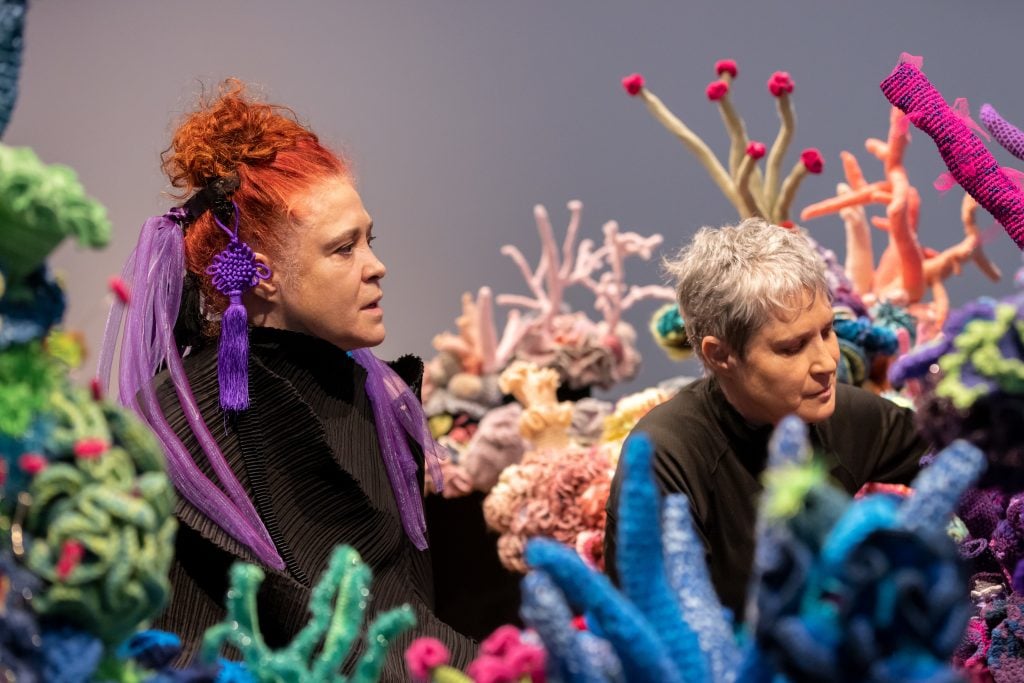
Part of the idea behind the work is to encourage a community spirit.

by
Amah-Rose Abrams

An extraordinary crochet project by two sisters on view at the Museum Frieder Burda in Baden-Baden brings together art, science, and knitting to highlight the ecological threats coral reefs around the world face amid climate change.
Margaret and Christine Wertheim, whose project weaves together mathematics, critical theory, and feminism has been exhibited all over the world, including at the 2019 Venice Biennale. But that’s only one part of the project. Since 2019, the sisters have also provided volunteers around the world (including in New York, London, Melbourne) with everything they need to contribute their own crochet projects.
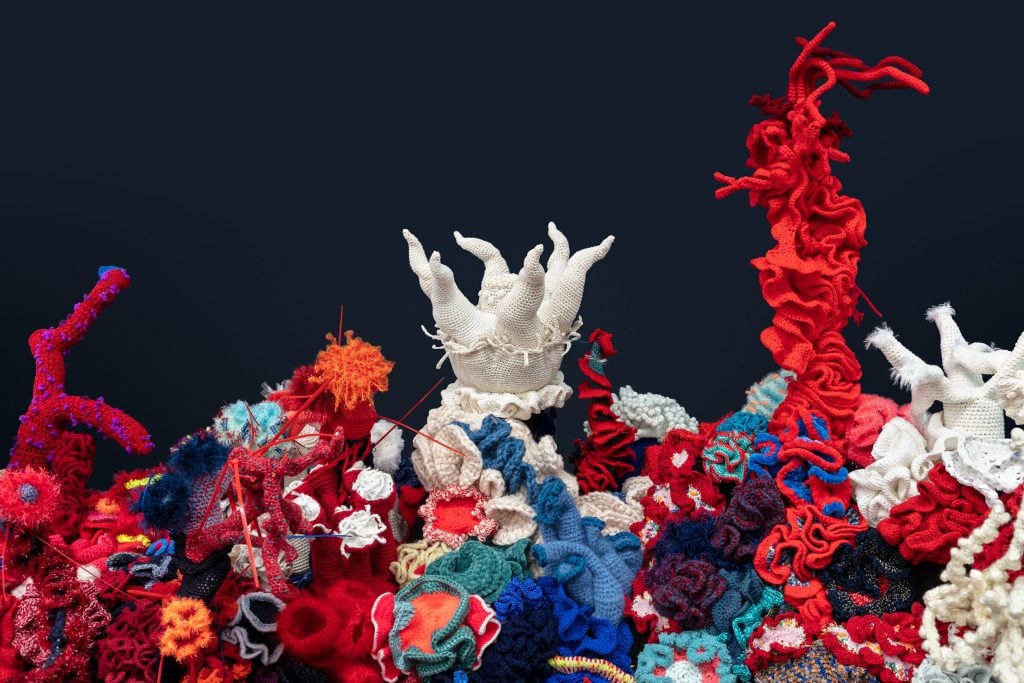
Margaret and Christine Wertheim, Crochet Corel Reef. Courtesy Museum Frieder Burda, Baden-Baden.
“Just as living things evolve through small changes to an underlying DNA code, so the Crochet Coral Reef evolves through small changes to an underlying crochet code,” the sisters said in a statement. “Thus, there is an emerging taxonomy of crochet coral ‘organisms.'”
Margaret, a prolific science and cultural history writer, and Christine, a teacher of critical studies at Goldsmiths College and Calarts, joined forces as artists in 2005 to initiate the project.
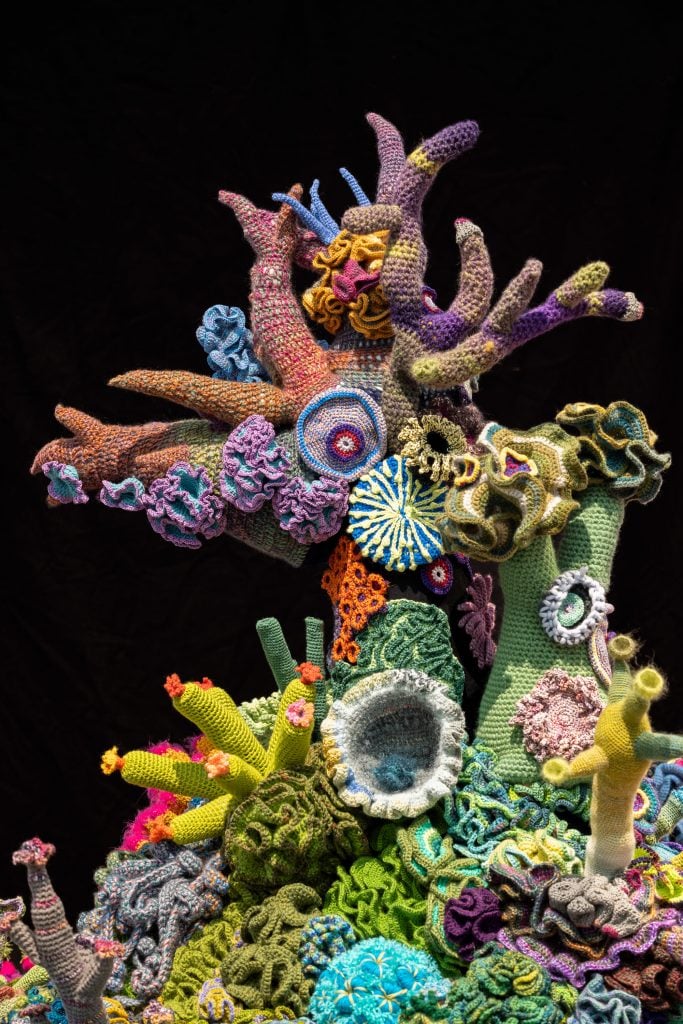
Margaret and Christine Wertheim, Crochet Corel Reef. Courtesy Museum Frieder Burda, Baden-Baden.
Looking at stitch patterns for coral reefs as a form of scientific or genetic code, the sisters found a fan in Museum Frieder Burda artistic director Udo Kittelmann.
“Margaret and Christine’s work is so unique, so strong, and carries such an important message,” he told Artnet News. “In my work, it is crucial to put together an exhibition that touches and inspires and ultimately creates a desire in us to engage and to be a part of the endeavor. The notion of exploring the science and mathematics of corals was something I had never thought about in that way before.”
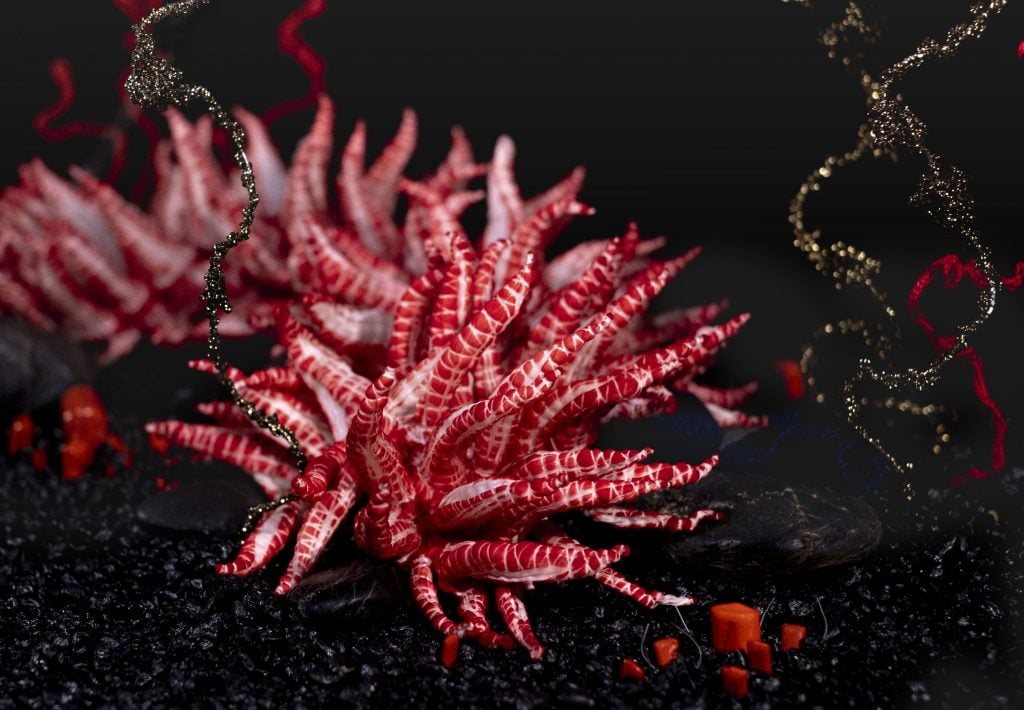
Margaret and Christine Wertheim, Crochet Corel Reef. Courtesy Museum Frieder Burda, Baden-Baden.
After more than two years of lockdowns, the Baden-Baden show was a new opportunity for the Wertheim sisters to work with locals: around 5,000 people in the surrounding area contributed to the reef on view at the museum.
“It was my explicit wish to bring a project to Baden-Baden that is not only an exhibition about artistic practice, but also about inviting and bringing people together,” Kittelmann said.
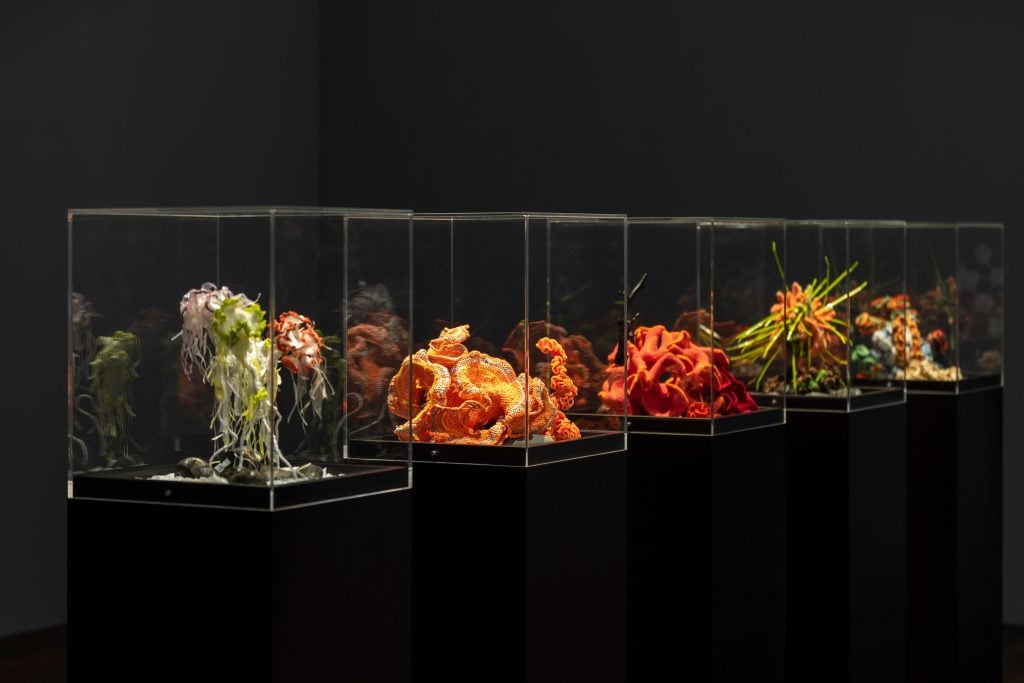
Margaret and Christine Wertheim, Crochet Corel Reef. Courtesy Museum Frieder Burda, Baden-Baden.
And the project, of course, is also a comment on feminism and sexism, considering the gendered history of knitting.
“Crocheting might be female, but the message this project conveys will impact everyone,” Kittelmann said.
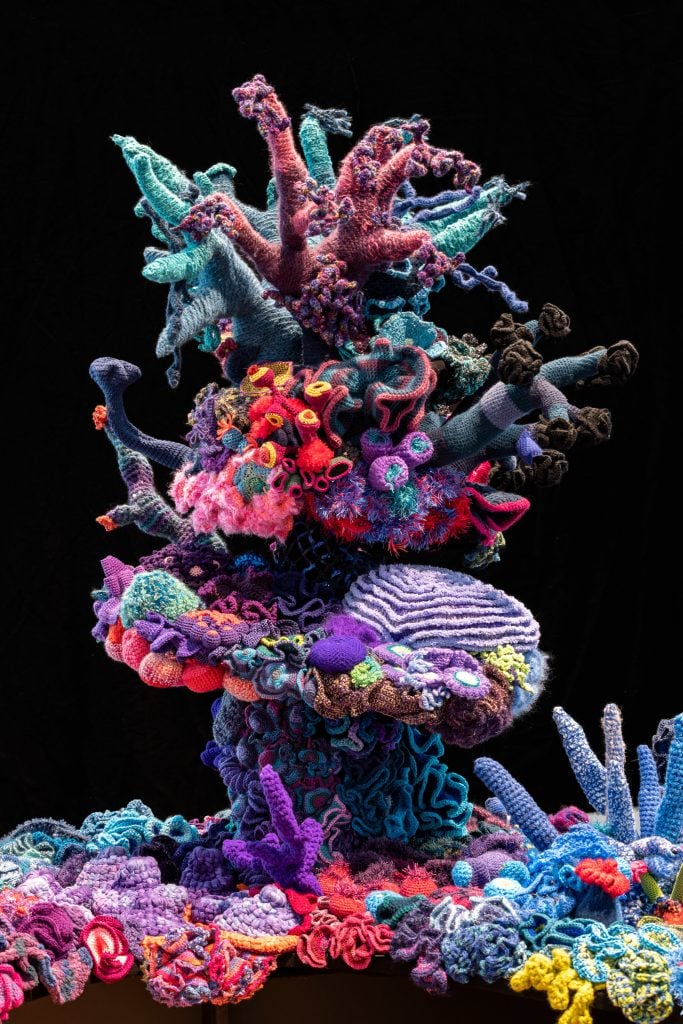
Margaret and Christine Wertheim, Crochet Corel Reef. Courtesy Museum Frieder Burda, Baden-Baden.